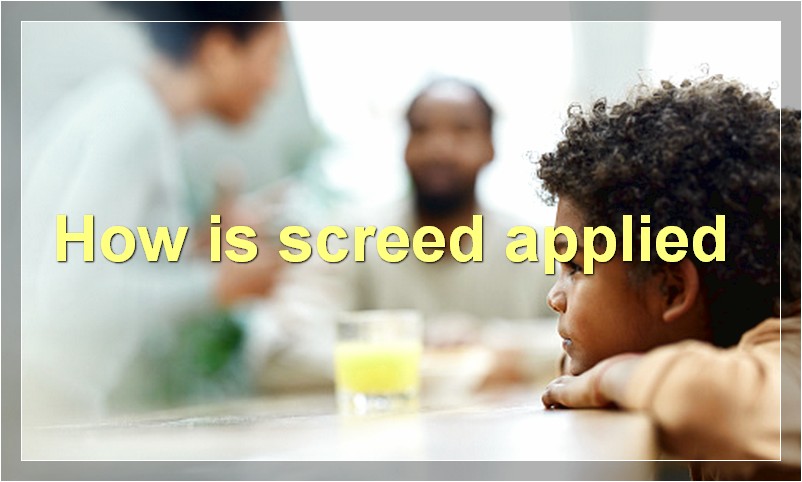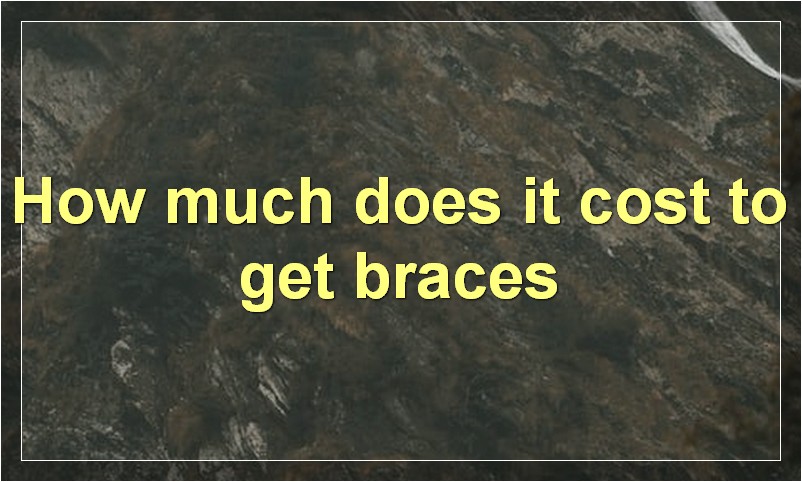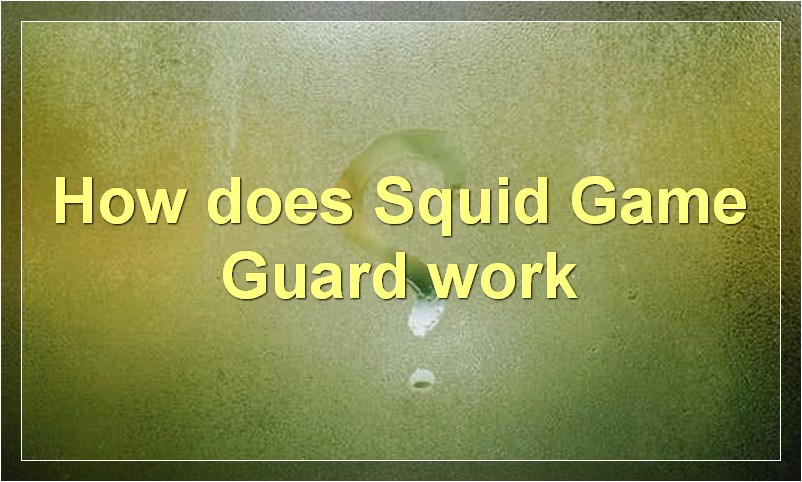You may have heard of concrete and you may have heard of screed, but what is the difference between the two? Screed is a type of concrete that is often used for flooring, whereas regular concrete is used for foundations and walls. Here, we will take a closer look at screed and how it differs from regular concrete.
What is screed?
Screed is a thin layer of cement or other material, spread over the surface of a floor or other area to provide a level base, or to insulate or waterproof it. It is usually applied to concrete before laying floor tiles, carpet, linoleum or other finishes.
Screed is also used to level out uneven floors and prepare them for laying a new floor covering. It is often used in conjunction with underfloor heating systems as it provides an even surface over which the pipes can be laid. Different types of screed are available, depending on the job it needs to do.
Sand and cement screed is the most common type of screed used in the UK. It is made from a mixture of sand, cement and water, and is suitable for most jobs where a basic level of insulation and waterproofing is required.
Anhydrite screed is made from calcium sulphate and is used where a high level of insulation is required, such as in hospitals and laboratories. It is also suitable for use with underfloor heating systems.
Polymer-modified screed contains additives that make it stronger and more resistant to cracking than standard sand and cement screed. It is often used in commercial projects such as shops and offices, as well as in domestic properties where there is likely to be heavy foot traffic.
Quick-drying screed can be used where time is of the essence – it can be ready to walk on within hours of being laid. This type of screed is often used in situations where normal screed would take too long to dry, such as in warm weather or when a fast turnaround is needed.
What are the benefits of using screed?

There are many benefits of using screed in construction projects. Screed is a level base layer, usually between two and four inches thick, that is poured over the subbase layer of a flooring system. It is most commonly used in commercial and industrial applications because it can be applied quickly and evenly to create a level surface. Once it sets, screed provides a durable foundation for flooring materials such as carpet, tile, and hardwood.
Screed is made from Portland cement, sand, water, and sometimes other additives that improve its workability or set time. It is mixed on-site and then poured into place using a screed pump. The pump distributes the material evenly across the desired area so that it can be smoothed out with a trowel.
The biggest benefit of using screed is that it saves time. By creating a level base layer in one step, screed eliminates the need for multiple steps that are required with other methods, such as mudjacking. This can shave days or even weeks off of the construction schedule. In addition, screed can be applied in a fraction of the time it would take to lay down individual concrete slabs by hand.
Screed also provides superior strength and durability. When properly mixed and cured, screed can have compressive strengths up to 10,000 pounds per square inch (psi). This makes it ideal for high-traffic areas that will experience heavy loads, such as warehouses and factories. Screed’s durability also makes it resistant to cracking and chipping, which means that it will maintain its smooth finish for many years.
In addition to its strength and durability, screed also has excellent thermal properties. It conducts heat well, which makes it ideal for use in radiant floor heating systems. When combined with other insulating materials, screed can help reduce energy costs by keeping the heat where it belongs – in the room.
Screed is also an environmentally friendly material. It is made from natural materials that are readily available, and it does not off-gas toxic chemicals during or after installation. Screed can also be recycled or reused in other projects.
If you are looking for a fast, strong, and durable foundation for your next flooring project, consider using screed. Its many benefits will save you time and money while providing a high-quality finished product.
How is screed different from concrete?
Screed and concrete are both construction materials that are used for different purposes. Screed is a thin layer of mortar or concrete that is used to create a level surface, while concrete is a heavier mixture that is used for structural support. Screed is typically applied over a subfloor before laying tile or other flooring materials, while concrete is often used for foundations, walls, and sidewalks.
What types of projects is screed typically used for?
Screed is a construction material made from cement and aggregate, mixed together in specified proportions and used to form a level bedding upon which other construction materials can be laid. It is typically used for projects such as:
-Laying a level base for flooring
-Creating ramps
-Filling voids
-Floating floors
Screed is made from a Portland cement and aggregate mix, and is available in different thicknesses depending on the intended use. It is applied wet and left to dry, during which time the Portland cement sets and hardens, binding the aggregate together to create a strong, level surface.
Screed is an essential part of many construction projects, and its uses are varied. Whether you’re laying a new floor, creating a ramp or filling a void, screed is an ideal solution.
How is screed mixed?
Screed is a construction material used for leveling and smoothing surfaces, usually made from a mixture of Portland cement, sand, and water. It is a thin,pourable form of concrete that can be easily leveled and is often used as an underlayment for flooring installations.
Screed is typically mixed in a ratio of 1 part cement to 3 parts sand, and just enough water to make it pourable. The amount of water added will vary depending on the type of cement used and the desired consistency of the screed.
Once mixed, screed can be poured directly onto a surface and leveled using a straight edge or trowel. It should be allowed to cure for at least 24 hours before walking on it or installing flooring over top.
How is screed applied?

Screed is a construction material used to create level surfaces, typically between two different floor types. It is made of cement, aggregate, and water, and is usually applied as a pourable or pumpable mixture. It can also be applied using a hand trowel.
Screed is most commonly used to create a level surface prior to laying flooring such as tiles, vinyl, or carpet. It can also be used to level off an existing floor that has become uneven over time. Screed can also be used to fill in gaps or cracks in a floor, or to level out a sloping floor.
Screed is typically applied over a subfloor that has been prepared with a layer of leveling compound. Once the screed has been applied, it needs to be left to dry for at least 24 hours before the flooring can be laid.
If you are laying screed yourself, it is important to follow the manufacturer’s instructions carefully. The mix needs to be of the correct consistency – too wet and it will not set properly, too dry and it will be difficult to work with. You will also need to ensure that the area you are working in is well ventilated, as the fumes from drying screed can be harmful.
What tools are needed to apply screed?
When it comes to screeding, there are a few tools of the trade that you’re going to need in order to get the job done right. Of course, you’re going to need the screed itself, but there are a few other things you should have on hand to make the process go as smoothly as possible. Here’s a look at what you need to apply screed.
A Good Wheelbarrow
You’re going to need a good wheelbarrow to transport the screed from where it’s mixed to where it needs to be applied. A standard garden variety wheelbarrow will do the trick, but if you want to make things easier on yourself, opt for a wheelbarrow with larger wheels. That way, you won’t have to struggle as much when you’re trying to maneuver it over rough terrain.
A Screed Board
A screed board is essentially a long, straight piece of wood or metal that you use to level off the screed as you’re applying it. It’s important to have a board that is long enough to span the entire length of the area where you’ll be applying the screed. This will ensure that you can create an even surface.
A Screed Pump
If you’re working with a large area, you may want to consider using a screed pump. This will make it easier to apply the screed evenly over a large surface without having to lug around a heavy wheelbarrow full of material.
Protective Gear
When working with any type of cement-based product, it’s important to wear protective gear, including gloves, goggles, and a dust mask. These products can be harmful if they come into contact with your skin or eyes, so it’s best to err on the side of caution and take precautions.
With these tools on hand, you’ll be ready to tackle any screeding job that comes your way.
What are some tips for working with screed?
When working with screed, it is important to keep the following tips in mind:
-Wet the surface before applying the screed. This will help to ensure that the screed adheres properly.
-Apply the screed in small batches, as it can dry quickly.
-Use a trowel or float to smooth out the screed.
-If there are any low spots, fill them in with additional screed.
-Let the screed cure for at least 24 hours before walking on it or applying any finishes.
How should screed be cured?
Screed can be cured in a number of ways, depending on the type of screed and the desired finish. For example, some types of screed, such as gypsum-based screeds, can be left to air dry naturally. However, other types of screed, such as cement-based screeds, need to be cured using a process known as ‘wet curing’. Wet curing involves keeping the screed moist for a period of time, typically around three days, so that it can reach its full strength. There are a number of ways to wet cure screed, such as covering it with damp hessian or plastic sheets.
Are there any special considerations when using screed on a project?
Screed is a versatile material that can be used for a variety of purposes, from leveling uneven floors to creating a smooth surface for painting or tiling. While it is generally easy to work with, there are a few things to keep in mind when using screed on your next project.
When mixing screed, be sure to use the correct ratio of water to powder. Too much water will make the mixture too runny and difficult to work with, while too little water will make the mixture too thick and difficult to spread evenly.
It is also important to allow the screed to cure properly before walking on it or applying any finishes. Depending on the type of screed used, this can take anywhere from 24 hours to a week. Once cured, screed is incredibly strong and durable, so it is well worth the wait.
Finally, keep in mind that screed is not always the best solution for every problem. If you are dealing with a very large area or an irregular surface, it may be better to use a self-leveling compound instead. Screed is best suited for smaller areas or surfaces that are only slightly uneven.




